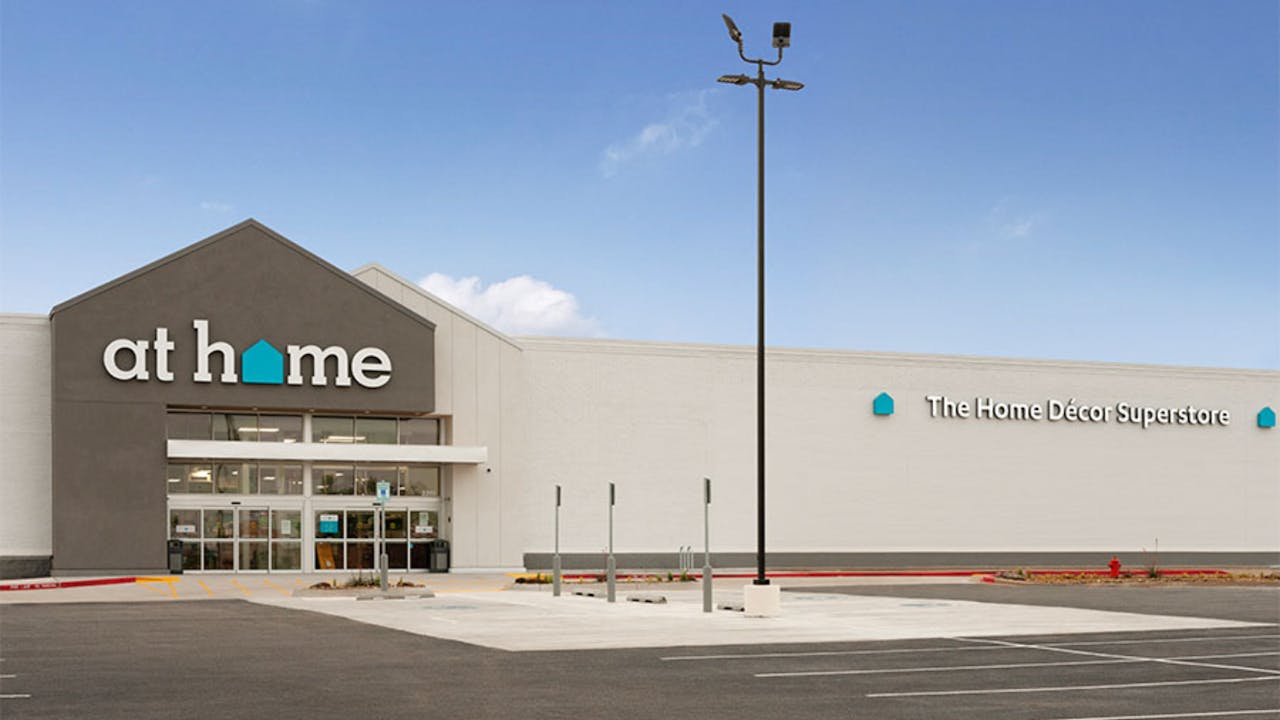
Tariffs, heavy private equity debt and seasonal dependence collide to threaten the sustainability of ultra‑low‑cost home goods retail.
At Home built its identity on low‑cost imported décor, sourcing around 90% of its merchandise from overseas suppliers in ChinaVietnam and India. Its core model relied on volume and affordability, with most items priced under $20. That approach worked when trade remained stable, but recent tariffs, which reached as high as 145% on Chinese imports, struck just as consumers shifted spending toward essentials and away from discretionary purchases such as home décor.
The problem At Home faces is not isolated. Many off-price home goods and dollar-store chains operate on similarly thin, import-heavy strategies. In today’s context of unpredictable tariffsinflation, supply-chain disruption and a more cautious consumer base, these businesses face growing exposure. Unlike brands with stronger pricing power, discount-focused retailers have little ability to offset rising costs without losing customers.
Shipping bottlenecks added significant freight costs during 2021–22, further squeezing already tight margins. With limited room to absorb rising input costs and an average customer spend of about $75, At Home lacked flexibility. As a result, in‑store traffic fell approximately 24% in early 2025 compared with pre‑pandemic levels, reflecting shifting consumer priorities and mounting economic pressure.
Want to go deeper? Ask The Drum
Following its 2021 acquisition by Hellman & Friedman, At Home began its Chapter 11 process carrying nearly $2bn in debt – a level of leverage that magnified every external shock, whether tariffs, housing market softness or inflation. The retailer also relied heavily on holiday‑driven sales, which account for around 40% of annual revenue. In ideal conditions, that seasonal concentration delivers strong volume. In 2025, however, it became a vulnerability. As economic conditions soured, seasonality compounded the impact instead of cushioning it.
In response, At Home secured $600m in debtor‑in‑possession financing, including a $200m capital infusion and plans to close approximately 26 underperforming stores as it moves toward an October emergence. But debt relief alone may not be enough. Without diversified sourcing, stronger pricing power or value-added offerings, the risk remains that similar retailers may face the same pressures in the months ahead.
The fallout also raises broader questions for private equity investors. Leverage-driven strategies that once worked under predictable trade and consumer conditions are now colliding with global volatility and changing consumer behavior. Growth by expansion is no longer enough if the underlying economics can be undone by tariffs, freight costs or a shift in household spending habits.
The real question is who adapts in time – and who misses the warning until it’s too late.


![[News] Wolfspeed Reportedly to Be Taken Over by Apollo-Led Creditors Amid Bankruptcy, with Rivals Set to Gain](https://gvh.cdf.myftpupload.com/wp-content/uploads/2025/06/News-Wolfspeed-Reportedly-to-Be-Taken-Over-by-Apollo-Led-Creditors-Amid-Bankruptcy-with-Rivals-Set-to-Gain.jpg)
